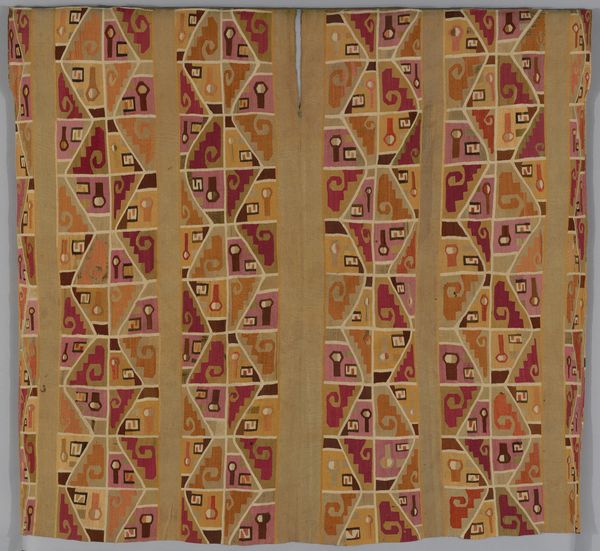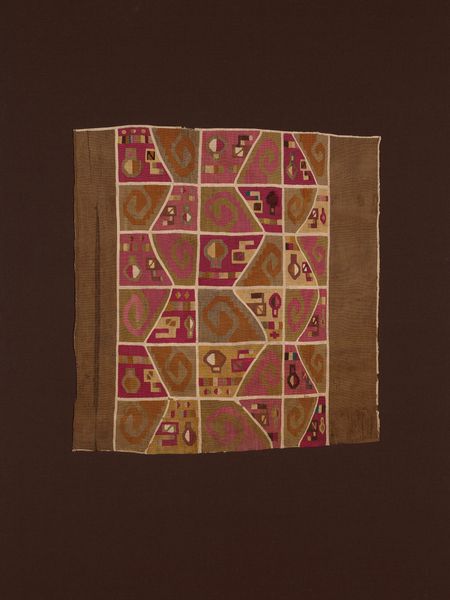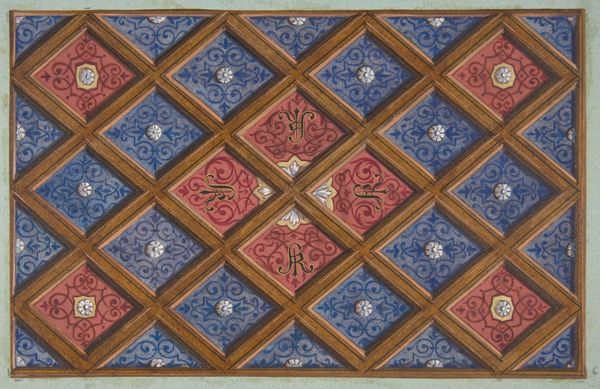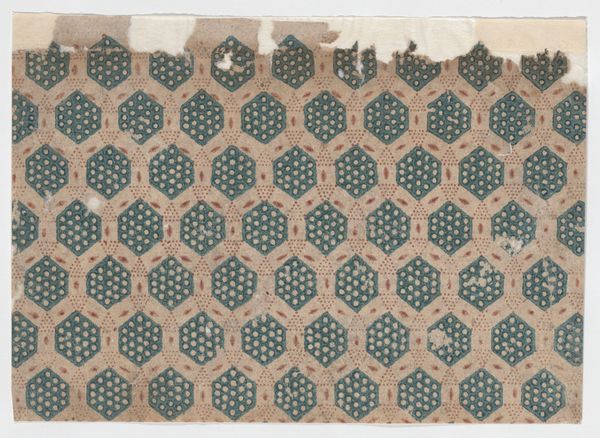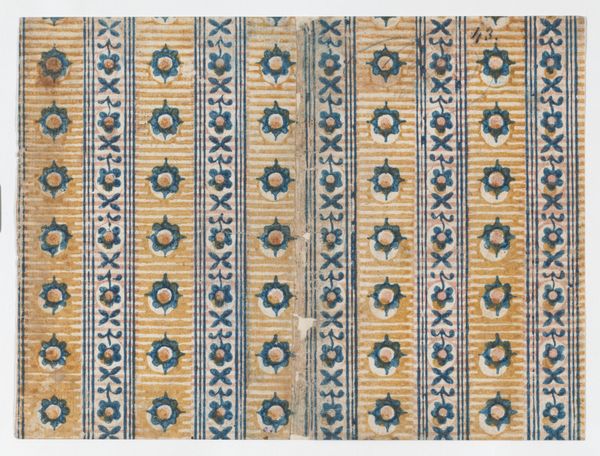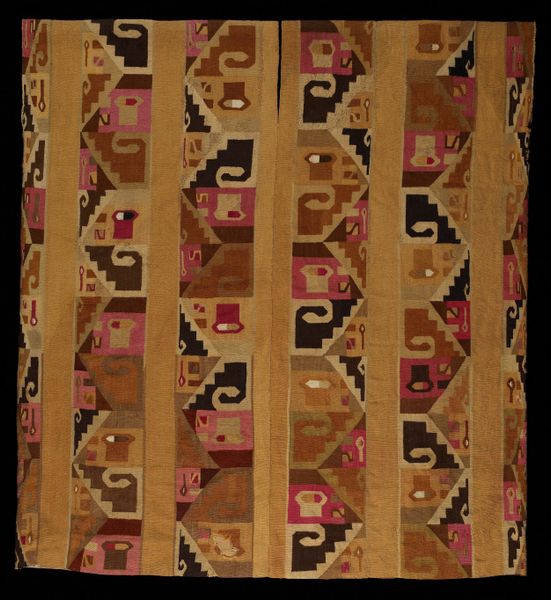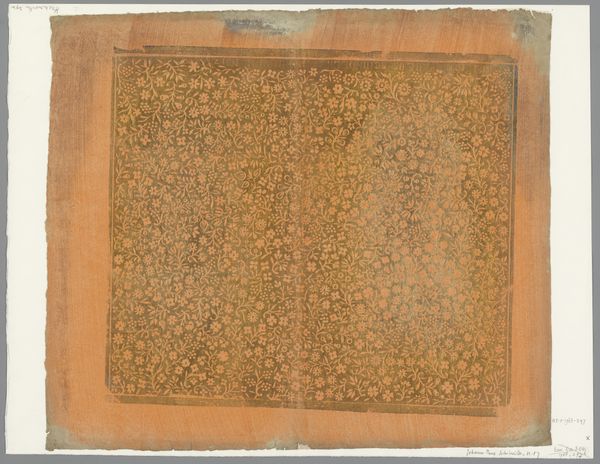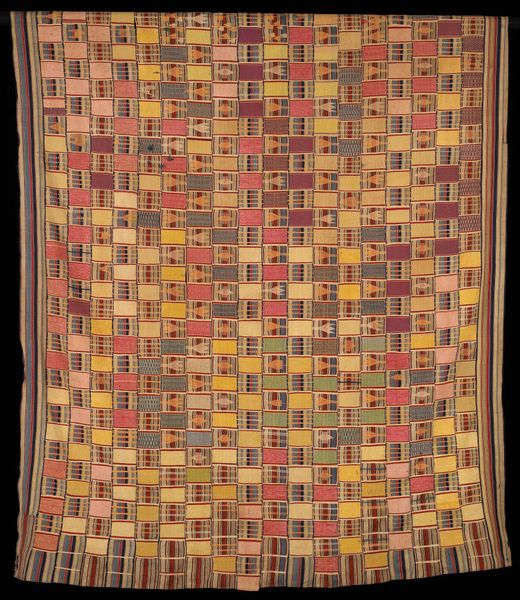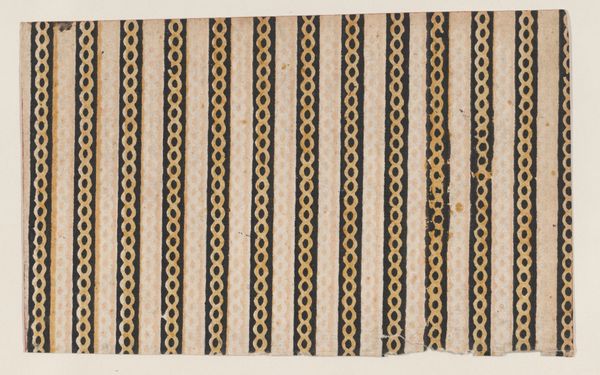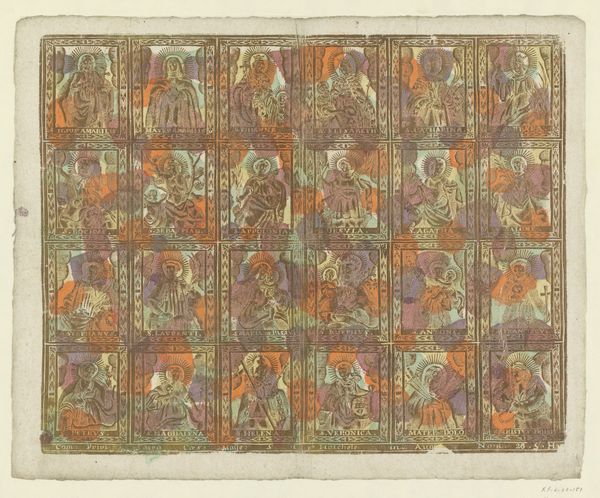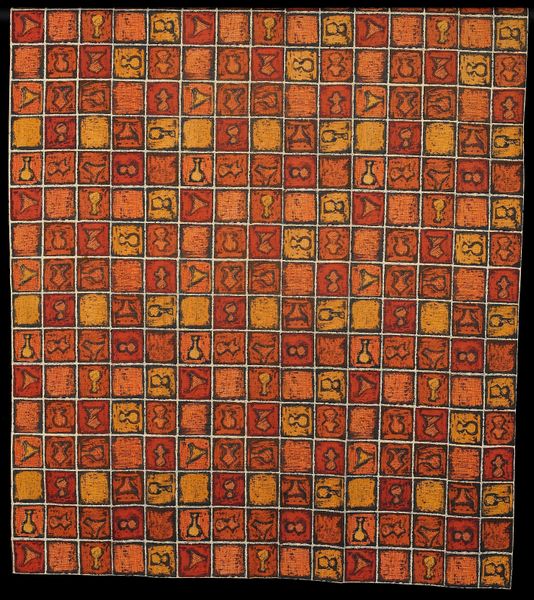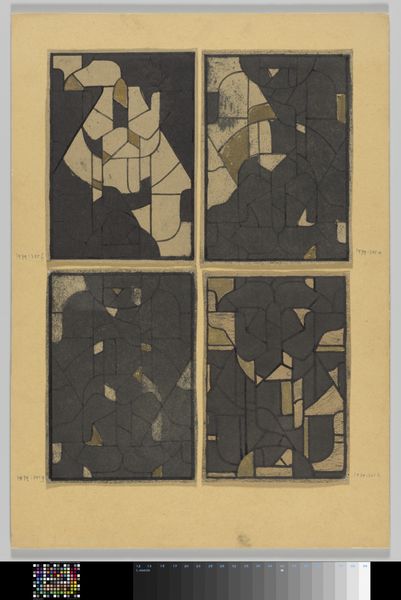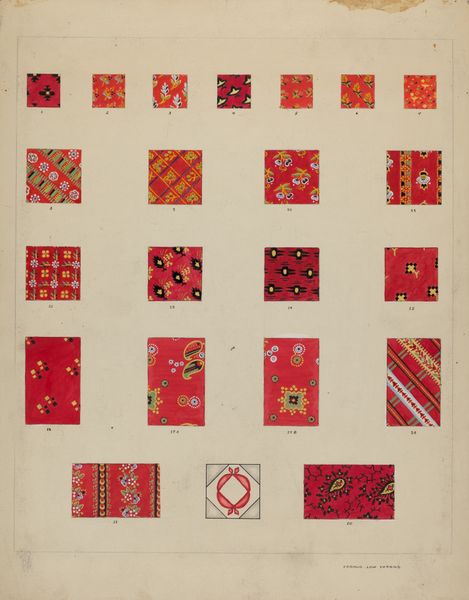
fibre-art, weaving, textile, cotton
#
fibre-art
#
weaving
#
textile
#
geometric pattern
#
geometric
#
cotton
#
indigenous-americas
Dimensions: 102.6 × 113 cm (40 3/8 × 44 1/2 in.)
Copyright: Public Domain
Editor: Here we have the “Tunic,” a woven textile created by the Wari people, sometime between 600 and 800 CE. It’s amazing to think about how old this is! The geometric patterns are quite captivating, and it almost looks like a complex code. What do you see when you look at this piece? Curator: This tunic speaks volumes about Wari society through its very construction. We need to consider the immense labor involved in producing this textile. The gathering and preparation of fibers, the dyeing process, and then the incredibly intricate weaving itself. Editor: Right, the time alone must have been significant. Do you think it affected the tunic's purpose? Curator: Absolutely. This wasn’t just everyday wear. The fineness of the weave and the complexity of the design point towards a garment of high status, possibly reserved for ritual or ceremonial use. Think about the access to materials implied too. Dyes weren’t always readily available, implying complex trade routes and resource control. Editor: So, it reflects the social and economic structure of the time? Curator: Precisely. By examining the materiality of the tunic – what it is made of and how it was made – we gain insight into Wari social structures, belief systems, and technological capabilities. It is a fascinating way to challenge the traditional notion of "art" and consider the socio-economic context that influenced this textile production. Editor: That makes so much sense! I never really considered the economic aspect. It's more than just a pretty pattern, but really a window into the past. Curator: Exactly! We move beyond simply admiring an aesthetic object and understand its deeper cultural significance.
Comments
No comments
Be the first to comment and join the conversation on the ultimate creative platform.
